My question is similar to this one: vary point color based on column value for multiple data blocks gnuplot
Except there was not an explanation given above for the syntax used and what it meant..
The data looks like this - columns separated by a comma and enter separates rows:
0, 0F_0F_0F_0F_0F, 0_0_0_0_0_0_0_0_0_0, 1_0_0_0_0_0_0_0_0_0
4.046025985, 0F_2Fo_0F_2Fo_0F, 0_0_1_0_0_0_0_0_1_0, 1_1_0_0_0_0_1_0_0_0
2.941144083, 0F_0F_0F_0F_0F, 0_0_1_0_0_1_0_0_0_1, 1_0_0_0_1_0_0_0_0_0
1.836301245, 0F_0F_0F_2Fo_0F, 0_0_0_0_0_0_0_0_0_0, 1_0_0_0_0_0_0_0_0_0
0.90317579, 0F_0F_0F_2Fo_0F, 0_0_0_1_0_0_0_1_0_0, 1_0_1_0_0_1_0_0_1_0
3.826663156, 0F_0F_0F_0F_0F, 0_1_0_0_1_0_1_0_0_1, 1_0_1_0_0_0_0_0_0_0
In my datafile, there are 100 individual rows, where column 1 is to be used for the colour palette and columns 2-4 are labels for X,Y axes on two different plots
What I want is an X,Y scatter of columns 3 and 4, with column 1 used to colour each point on the plot.
Here is my script attempt:
set title "K and W Occupancy \n KcsA, Replica 0, 0 mV "
set xlabel "POT" font ",18"
set ylabel "Water" font ",18"
set cblabel "Free energy (kT)" font ",18"
set xtics rotate by -45
set xtics out font ", 13" nomirror
set ytics out font ", 13" nomirror
set pointsize 0.4
set xrange [0:100]
iset yrange [0:100]
set cbrange [0:10]
# MATLAB jet color pallete --> from https://github.com/Gnuplotting/gnuplot-palettes/blob/master/jet.pal
# palette
set palette defined (0 0.0 0.0 0.5, \
1 0.0 0.0 1.0, \
2 0.0 0.5 1.0, \
3 0.0 1.0 1.0, \
4 0.5 1.0 0.5, \
5 1.0 1.0 0.0, \
6 1.0 0.5 0.0, \
7 1.0 0.0 0.0, \
8 0.5 0.0 0.0 )
splot '$filename' using 3:4:($1 <= 10 ? 0 : 1) w p pointtype 5 pointsize 1 palette linewidth 10
I do not really know what this means: ($1 <= 10 ? 0 : 1)
Why does the script plot a 3D graph with the data incorrectly placed?
Was expected a 2D plot with unique entries along the X and Y axes, with each point coloured along a colour scale..
The attempt described above results in a 3D plot and the points are incorrect.
Multiple answers to similar questions I have read do not explain what each term in the gnuplot script means, including:
Plotting style based on an entry in a data-file
gnuplot splot colors based on a fourth column of the data file
vary point color based on column value for multiple data blocks gnuplot
